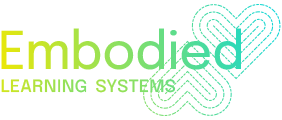Wednesday Mobilignment classes in NYC have been super fun! It’s a mix of professional dancers, new dancers, and total beginners who are not dancers at all.
The really cool thing is – if you look at the short video above, you canʻt tell which is which – beginner, professional, smeshional! Everyone is discovering new, easier movement patterns. So if you want a place where you can really move and you don’t have to try and fit in to a professional dance class, it’s perfect.
Alexander Technique and Mobilignment™ at Movement Research in NYC
Gibney Dance, 280 Broadway
Wednesdays 2:00 – 4:00 pm, November & December
Click here for more info.
Lately I have been emphasizing the healing properties of the paired concepts:
“primary” and “secondary.”
These concepts propose a new way of looking at both posture and movement that will never make your body stiff and strained. Primary (towards self) and secondary (away from self) reflect the flow of life lived in a gravitational field, including towards the ground/self and away from the ground/self. It’s so simple, but it can be found in absolutely everything that we do. In the video above, the movers are naturally alternating between one and the other – but the only directive I gave them was to alternate how they were paying attention!
We shifted attention to self, then to environment (“not-self”), and then explored a kind of “wandering” of attention between the two. That alternating flow of attention is something we do all the time to navigate our world, without really “thinking” about it.
I usually start with primary because most of us don’t get enough of it. Or, if we do, we only get it in our thoracic spine and call it “slumping” because we are not allowing our head and primary focus to go all the way towards self. We are usually pulling some part of us up and out of it, causing compression and “neck forward” posture.
We rarely get to release our whole body completely into this curled state. Our grown up bodies are so different from an infants body, as the size of our limbs in relationship to our torso is so much larger. Check out this weird drawing by Leonardo Da Vinci, which shows a pretty buff semi-adult baby! Even as grown ups, though, our limbs can still fold, tuck, and spiral to facilitate this movement with some modification and adjustments:

To do it, you will really have to stop trying to straighten your spine and throw back your shoulders! Extension, or “secondary” also goes with our preferred adult mode of paying attention. We get pulled away from awareness of ourselves and into work, or whatever is being demanded of us in the world.
I suggest beginning with primary, or fetal movement, at the beginning of any warm up for activity:
1) Go on to “all fours.” Place your hands right under your shoulder joints, your toes together behind you, and your knees angles slightly outwards (definitely NOT parallel for you dancers).
2) Look down. Can you see behind you between your legs? Did your back stay straight? If so, let go. Let it curl. Your pelvis will shift up and back, but it won’t be because you tuck your stomach in. It will be because you stopped trying to keep your back straight.
3) Fold your elbows until your forearms are resting on the floor, and keep looking under yourself til your forehead rests on the floor. It should feel easy, you shouldn’t be pushing your head down with force from your neck, just letting it rest. Your knees will fold to allow the weight of your pelvis to shift and go back, where it can rest on your heels if your knees allow. If your knees are tight or creaky, just explore the movement as far as you can go smoothly without forcing your head onto the floor. Don’t push, just ease into it and out of it – back up onto all fours, looking out, and explore primary/seceondary as a movement, rather than a shape.
4) MODIFICATION FOR TIGHT HIPS: you can rest your head on a high, hard-ish pillow or block if your hip joints are tight. There is no need to push or force hip flexion.
5) After finding your easiest possible fetal resting place, you can gently roll onto your side (looking to the left or right to start the roll) and continue the spiral into a kind of open X-shape on your back – that would be a release, or “reset” from primary into secondary. Enjoy the support of the floor behind you and see how much of your environment you can take in from there.
Itʻs a release into supported expansion, instead of a pull into expansion.
Enjoy this postural reset 🙂 – and if you want guidance in how to do it, come to class!
